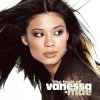
Vanessa-Mae (Vanessa-Mae Vanakorn Nicholson) is a world-renowned British violinist and composer, celebrated for her bold fusion of classical music, electronic elements and pop influences. Her signature style has been described as «violin techno-acoustic fusion» or, in her own words, «violin pop».
Thanks to her virtuoso technique, experimental approach to sound, and striking stage image, Vanessa-Mae became one of the most recognizable violinists in the world and a symbol of the modern reinvention of classical music.
Early years
Vanessa-Mae was born on 27 October 1978 in Singapore.
She is of mixed heritage: Thai (father) and Chinese (mother). After her parents’ divorce, her mother took her to the United Kingdom, where she grew up and received her musical education.
She began playing the piano at the age of three and soon moved on to the violin — the instrument that became the core of her life. At just 10 years old, Vanessa made her debut with a philharmonic orchestra, and at 13 she was recognized as the youngest student ever admitted to the Royal College of Music in London.
The beginning of her career and first success
In 1991, Vanessa released her debut album, «Violin», showcasing remarkable technical brilliance and musical maturity.
In 1992, she acquired her first Zeta electric violin, a turning point that marked her shift from the traditional classical stage towards popular and crossover music.
The decisive breakthrough came in 1994 with the release of «The Violin Player», where Vanessa-Mae blended classical themes with electronic production and club rhythms.
The album quickly became a sensation, entering the charts in more than 20 countries and selling in the millions. It elevated her to global stardom and made her one of the most commercially successful violinists in history.
Worldwide recognition
In 1996, Vanessa-Mae was nominated for the BRIT Awards in the category «Best British Female», an exceptional achievement for an instrumental artist.
In 1997, she was invited to perform at the Handover Ceremony marking the return of Hong Kong to China, where she appeared alongside Yo-Yo Ma and Tan Dun — a historic event symbolizing cultural dialogue between East and West.
Honouring her Asian roots, she released the album «China Girl», combining traditional Chinese motifs with Western orchestration and electronic textures.
Further career and musical style
Vanessa-Mae continued to evolve her distinctive violin-techno fusion style, touring worldwide and recording albums that merged classical, pop, electronic, and world music elements.
Key albums:
| Year | Album | Highlights |
|---|---|---|
| 1991 | Violin | Classical debut recorded with orchestra. |
| 1994 | The Violin Player | Breakthrough crossover album that brought her global fame. |
| 1996 | The Classical Album 1 | Modern interpretations of Bach, Beethoven and other classics. |
| 1997 | China Girl: The Classical Album 2 | Eastern influences and a fusion of classical music with ethnic elements. |
| 2001 | Subject to Change | A more mature, reflective and experimental sound. |
| 2004 | Choreography | A mix of pop, symphonic arrangements and world music. |
| 2009 | The Violin Player (Reissue) | Updated edition of the landmark album with bonus material and remixes. |
Style and influence
Vanessa-Mae’s music broke down the barriers between classical art and mainstream culture.
Her style brings together:
- the virtuosity of the classical tradition,
- the energy and drive of the club scene,
- Eastern melodicism and a touch of mysticism,
- emotional openness and theatrical flair.
Vanessa paved the way for a new generation of violinists, proving that the instrument can sound modern, bold, and exciting. She is often compared to Nigel Kennedy, but her artistic persona is more glamorous, visual, and concept-driven.
Awards and achievements
- BRIT Awards — nomination for Best British Female Artist (1996).
- MTV Europe recognition — for her contribution to crossover and fusion music.
- Guinness World Record — as one of the world’s best-selling violinists.
- Over 10 million albums sold worldwide.
Other projects and life beyond the stage
Beyond music, Vanessa-Mae has also made a name for herself in sports, representing Thailand in alpine skiing at the 2014 Winter Olympics in Sochi.
She has taken part in numerous charity concerts, contributed music for film, and supported young artists as a producer and collaborator.
Interesting facts
- Vanessa began playing the violin at 5 and performed with an orchestra by the age of 10.
- Her inspirations include Vivaldi, Paganini, Queen and Jean-Michel Jarre.
- Her Zeta electric violin became an iconic part of her image.
- Many of her releases were supported by striking music videos with elements of fantasy and ballet.
- In 2006, the BBC named her among the most influential women in British culture.
Legacy
Vanessa-Mae transformed how the violin is perceived in popular culture.
Her work united classical music, pop and modern technology, inspiring a new wave of crossover artists — from Lindsey Stirling to David Garrett.
She proved that the violin belongs not only in concert halls, but also on global dancefloors, remaining a symbol of elegance, innovation, and artistic freedom.



